Essex 2020 is officially launched with address from CSES
At the Essex 2020 launch event, held at Teledyne e2v on 20 January 2020, CSES Vice President Adam Wood talked about 20 surprising and inspiring inventions from Essex.
As well as the big names there are some things that you may not know came from Essex, and we are pleased to promote these in collaboration with Essex 2020 and BBC Essex. The diversity and significance of these, and other, inventions from our county is truly both surprising and inspiring!
Read on to be fascinated by the list of 20 inventions. If you know of any others, please tell us as we are collecting a catalogue of Essex inventions throughout 2020.
Construction

The Kingdom of Essex was founded in AD 527, and our story starts in the year AD 800 (or thereabouts)...
1. All-timber church
(Chipping Ongar, c. 800, Greensted Church)

Did you know that the oldest wooden church in the world is in Essex?
The church of St Andrew, Greensted-juxta-Ongar (more commonly known as Greensted Church) is the first ever church to be constructed entirely of timber. Furthermore, it is thought to be the oldest wooden building of any kind still standing in Europe (at least the parts that survive today).
That it still stands some 1200 years later truly is testament to the outstanding feats of human ingenuity across the ages, and shows that Essex was leading the way in engineering innovation right from the off...
https://www.instagram.com/p/B7V7oF2FRq8/
2. Crittall steel-framed window
(Braintree, 1884, Francis Henry Crittall)
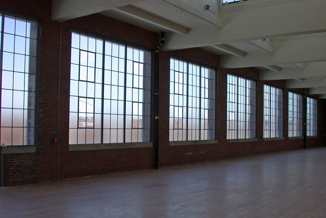
Crittall is an internationally recognised brand, regarded as setting the standard for steel-framed windows. Crittall windows are installed in Tower Bridge, the Houses of Parliament, Yale and Princeton Universities, and they were even on RMS Titanic.
The company was founded in 1849 by Francis Berrington Crittall, who bought the Bank Street ironmongery in Braintree. It was taken over by his son, Francis Henry Crittall, who brought the steel-framed window to market in 1884.
Residents of Witham (where the company is now based) will know that Silver End was a model village built for the factory workers. Very innovative for its time!
Agriculture and horticulture

Fundamentally, Essex is a farming county and has a thriving agriculture industry. As these next examples show, Essex has a long tradition of leading the way in agro-tech innovation.
3. Goldhanger Plough
(Goldhanger, 1795, William Bentall)
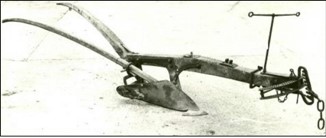
Who would have thought that a simple plough could break the mould of machine maintenance? The Goldhanger Plough, invented by William Bentall in 1795, was the first to have a modular design that greatly improved flexibility for the user. Parts could be changed on the farm, reducing cost and down-time and increasing output. Revolutionary for its time!
Bentall is a big name in the Heybridge area (including Goldhanger). William, his son, Edward Hammond Bentall, and grandson, Edmund Ernest Bentall, ran the firm and invented dozens of automation devices over the years. They are possibly most famous for the Bentall Engine in 1900 with its breakthrough low fuel consumption.
All this from a quiet seaside corner of our county.
4. Darby Steam-Digger
(Pleshey, 1879, Thomas Darby & Robert Hasler)

A most curious invention that gives its name to the Darby Digger pub in Wickford.
The Darby Digger was a steam-powered ploughing machine that could cover one acre per hour without the need for horses. Several iterations were built in Pleshey by Thomas Darby, a farmer, and his engineer Robert Hasler, who also served as the driver.
The first version having six feet that quite literally walked over the land! This was very ahead of its time, and we struggle to create walking robots even now (see Boston Dynamics' Big Dog for an amusing example). Darby did later change the legs for wheels, but the digger was very expensive and he never sold many.
Now, of course, mechanised and even automated farming is commonplace. Essex had the first example.
5. Hebe "Clear Skies"
(Hornchurch, 1995, Graham Hutchins)

A recent example of Essex's contribution to horticulture, this variety of the popular perennial shrub was patented in 1995.
Hebe "Clear Skies" – or to use its proper name, hebe pimeleoides var. glauco-caerulea × hebe albicans – was raised by Graham Hutchins at County Park Nursery in Hornchurch.
Food and drink

Now we all love our food and drink, and that is as true of Essex residents as anyone else, and all that farming produce has to go somewhere...
6. Hot and cold drinks dispenser (The Wonderful Barrel)
(Saffron Walden, 1696, Henry Winstanley)

This is really interesting: the world's first hot and cold drinks dispenser was invented in Saffron Walden. Called The Wonderful Barrel, it was invented in 1696 by Henry Winstanley, a notable local inventor who worked at Audley End for a time and who is most famous for his building the original Eddystone Lighthouse in the same year.
(That's not a picture of it, by the way).
The Wonderful Barrel was immensely popular, being a true first. It was first installed at "Winstanley's Water-Works", an early water sculpture garden that Winstanley set up in Piccadilly, London, and its fame persisted even after his death.
Such dispensers are now of course everywhere, but the concept was invented in Essex.
7. Little Scarlet jam
(Tiptree, c. 1900, Charles John Wilkin)

In 1885, Arthur Charles Wilkin founded the Britannia Fruit Preserving Company in Tiptree (although the fruit-growing industry there goes back to the 1700s). In the 1900s, his son Charles John Wilkin first imported strawberries of the Little Scarlet variety (fragaria virginiana) from Virginia in the USA.
Although the fruit is American, the company known today as Wilkin & Sons are the only commerical grower and producer. The popular jam was most certainly invented in Essex.
The rest, as they say, is history. Today the 'Tiptree' brand is favoured and trusted the world over. Did you know, for example, that Little Scarlet is the Queen's favourite jam if there is no home-made strawberry preserve available from the palace kitchens?
https://www.tiptree.com/littlescarlet
And this is just the first of two internationally famous food brands from Essex...
8. J2O
(Chelmsford, 1998, Sheraz Dar)

...and this is the second, which really needs no introduction at all.
This landmark product from Britvic (which started life as the British Vitamin Products Company when a Chelmsford chemist started selling home-made soft drinks) transformed the soft drinks market in pubs, bars and clubs.
Introduced in 1998 by Sheraz Dar when Britvic were still headquartered and had their manufacturing operations in Chelmsford, J2O is now, like Tiptree, an internationally renowned brand.
Britvic are now based in Hemel Hempstead but will always be closely associated with Chelmsford in Essex.
Mathematics
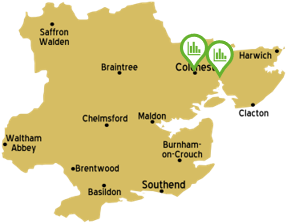
You'd be forgiven for thinking "what has Essex ever done for the 'M' in STEAM (mathematics)?" Well it turns out to be rather more than you'd expect...
9. Penrose's Law
(Colchester, 1939, Lionel Penrose)

Many will have heard of Roger Penrose, the eminent mathematician based in Oxford who is famous for, among other things, non-repeating tessellations (Penrose tiling) and his collaborations with the artist M C Escher.
But did you know that he is from Colchester? And that his father, Lionel Penrose, was also a successful mathematician, geneticist and psychiatrist?
Penrose senior made significant contributions to these fields, conducting the "Colchester Survey" in 1938, the first major study into genetic effects on intellectual capacity. In so doing, he designed a number of intelligence tests that are still used today and began to usher in today's more enlightened thinking about mental disability.
The invention we'd like to highlight here, however, is Penrose's Law of 1939, which states that "the population sizes of prisons and psychiatric hospitals are inversely related." It still holds (approximately) true today in many places, and in fact we give it a name: transinstitutionalisation. This is a cutting observation about the way psychiatric patients are treated by the state, and serves as a powerful lesson, reminding us to do better.
In his 'spare time', Lionel Penrose also developed chess theories and mathematically fairer voting methods. All this from Colchester!
10. Circular Sudoku
(Wivenhoe, 2006, Peter Higgins)

This is a fun – and surprising – example of creativity in mathematics, and comes to us from Professor Peter Higgins of the Department of Mathematical Sciences at the University of Essex.
In his recent talk at the London Mathematical Society, he describes how, in 2006, he invented Circular Sudoku, a variant on the popular square grid puzzle, and successfully launched it in the national papers.
So successfully, in fact, that it turned up on a sandwich wrapper!
It's worth pointing out that Prof Higgins has also made some very serious contributions to the world of pure mathematics, his specialism being in algebraic semigroups, which have an important place in computing (if you're interested, watch his talk, especially the bit about Burrows-Wheeler transforms and de Bruijn words). Nonetheless, we like the Circular Sudoku!
www.youtube.com/watch?v=AySck0UIUWY
Entrepreneurship
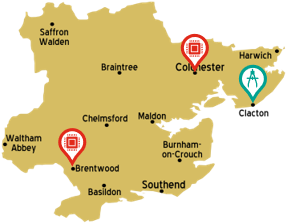
We've all no doubt encountered the East End stereotype of the wheeler-dealer (Only Fools and Horses, anyone?). Despite this, Essex does in fact have a rich history of entrepreneurship, as demonstrated by the next examples.
11. Amstrad CPC 464
(Brentwood, 1984, Ivor Spital)

Essex's most famous entrepreneur (of recent times) has to be Lord Alan Sugar, nowadays of course well-known for his work on The Apprentice. Lord Sugar founded his company, Amstrad (for "Alan Michael Sugar Trading") in 1968 on King's Road in Brentwood. He was aged just 21!
One of his flagship products was the CPC 464, introduced in 1984 following a development effort led by Amstrad engineer Ivor Spital. It was one of the best-selling personal computers, with over two million units bought in Europe. This put up some fierce competition to the well-established Commodore 64 and Sinclair ZC Spectrum (no doubt many readers will remember these).
The market strategy clearly worked, because Amstrad later acquired the rights to the Sinclair product range. So that's two flagship PC platforms that will always have a connection to Brentwood.
12. LifeSaver bottle
(Colchester, 2007, Michael Pritchard)

This is a pleasing example showing that individual enterprise is still going strong in Essex, and in this case led to a breakthrough product that has met with immense commercial success.
Michael Pritchard is a prolific inventor who has come up with a number of notable products from his workshop in Colchester. These include the "Anyway Spray", featured on Dragon's Den in 2009.
The LifeSaver bottle is probably his most successful invention, however, developed in 2007 following the Indian Ocean Tsunami (2004) and Hurricane Katrina (2005). It is a portable water filtration device, the first to easily allow the user to carry water with them and have it purified as they go.
It is now distributed and sold worldwide, including to large customers such as the British Army and Oxfam. The company is still based in Colchester!
13. CD Slot Mount
(Clacton, 2011, Gary Smith)

Another recent example of individual thought and creativity, this dashboard device holder mounts in the CD player slot of your car, requiring no adhesive or vacuum attachment which can be unreliable! It was invented in 2011 by Gary Smith of Clacton.
CD players in cars (as indeed everywhere) are on the wane now but this invention was well-received at the time, winning the Most Innovative Design award at the British Invention Show.
Arts
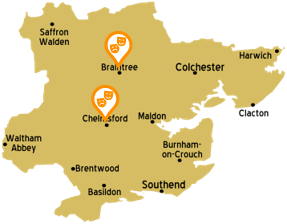
It shouldn't have escaped your notice that Essex 2020 is all about Science AND Creativity. The next two examples capture this very nicely.
14. Entertainment broadcasting
(Chelmsford, 1920, Marconi Company & Dame Nellie Melba)

One hundred years ago, on 15 June 1920, the voice of renowned opera singer Dame Nellie Melba was heard through wireless broadcast from the Marconi works at New Street, Chelmsford. Two 450-foot (140 m) antennas were built for the purpose (and other experiments)!
This was the world's first radio broadcast for entertainment purposes, and set in train a number of key developments – including the world's first radio station (2MT) in Writtle – that led to the multitude of media that we enjoy today.
One of the most significant inventions to spring from this world first was the British Broadcasting Corporation! The BBC was formally signed into existence on 18 October 1922 as a direct result of the successful broadcast experiments, and the Marconi Company was instrumental in making this happen.
All this from Chelmsford in Essex.
15. Big Beat genre
(Braintree, 1990, The Prodigy)

Seventy years on from Dame Nellie Melba's broadcast, in 1990, a lesser-known (at the time) pianist called Liam Howlett from Braintree made a demo tape. On it, he scratched the word "Prodigy", for the Moog synthesiser that he'd used to lay down the tracks.
(You can see where this is going...)
The rest needs little explanation. The Prodigy went on to sell 25 million records worldwide, among them their two UK number one singles, "Firestarter" and "Breathe" (both 1996). Their influence was profound: along with Fatboy Slim and The Chemical Brothers, The Prodigy are credited with pioneering the Big Beat music scene.
That all this started in Braintree was probably unknown to most people, until the sad news of co-founder and frontman Keith Flint's death in 2019. His funeral was held in Bocking, but the band – and the music – live on.
Science and technology breakthroughs

Those are two massive contributions to both the technology and art worlds, but if those weren't groundbreaking enough for you, we now come to some really big-hitters.
The next three examples are all truly revolutionary advances in science and technology, all of which were made in Essex...
16. Discovery of argon
(Terling & London, 1894, John William Strutt 3rd Baron Rayleigh & Sir William Ramsay)

You've probably heard of Lord Rayleigh (at least indirectly): he was an incredibly prolific scientist who has at least 35 laws, equations, theories, units, phenomena, prizes and even celestial objects named after him! The most well-known one is probably Rayleigh scattering, which explains why the sky is blue, but his contributions spanned all fields from fluid dynamics and acoustics to quantum mechanics and optics.
If you're from Chelmsford, you may also have heard the name Strutt (as in Strutt & Parker or the house at King Edward VI Grammar School), a significant landowning family with connections to the local area that go back to before the 1700s.
But did you know that they are the same family? And that they live in Terling, just north of Chelmsford? In fact, the barony is named for Rayleigh in Essex. Terling Place is home to Lord Rayleigh's laboratory. It was there that he conducted many of his breakthrough experiments, including ones that led to the discovery of Argon in 1894 with his colleague Sir William Ramsey.
The lab is still there today, in Terling, in pretty much the same condition as it was left by Lord Rayleigh's son, Robert Strutt (4th Baron Rayleigh), who was also an eminent physicist.
CSES was privileged to gain special access for a tour in 2018, and would like to do so again if possible (please get in touch if you're interested).
Argon is an incredibly important gas: it makes up 1% of the Earth's atmosphere, being the third of three major components, and has applications today including lighting, welding and dark matter experimentation. It is perhaps because of this that Lord Rayleigh and Sir William were awarded the Nobel Prize in Physics in 1904 for discovering it. In Essex.
Photos from Lord Rayleigh's Laboratory
17. Fibre optic communication
(Harlow, 1965, Sir Charles Kao & George Hockham)

This is a truly revolutionary breakthrough, without which we wouldn't be able to publish this web article and you probably wouldn't be able to read it. This is because the Internet as we know it wouldn't exist without fibre optic communications; broadband certainly wouldn't be possible.
In 1965, Sir Charles Kao and George Hockham were the first to demonstrate the practical use of glass fibre for transmission of information. This was while they were working at Standard Telecommunications Laboratories, which ultimately became part of Bell Labs and then Nortel, for all of which Harlow is well-known.
As well as the formidable legacy that is global high-bandwidth telecommunications, Sir Charles was awarded the 2009 Nobel Prize in Physics and has a school and business park (adjacent to the science park) named after him in Harlow, such was has impact.
It is difficult to overstate just how important this invention was, and it was made in Essex.
18. Digital colour photography
(Chelmsford, 1972, Michael Francis Tompsett)

The world's first colour digital photograph (seen here) was published in 1972 by Michael Francis Tompsett on the cover of Electronics Magazine (the photo is of his wife). It was taken using technology that he and his team at the English Electric Valve Company (EEV, now Teledyne e2v, in Chelmsford) had invented.
Tompsett was a prolific inventor: while at EEV he was instrumental in the development of video camera tubes and uncooled thermal imaging (just two of many world firsts to come from Waterhouse Lane). Later, at Bell Laboratories in the USA, he was the first to file a patent for the practical application of a charge-coupled device (CCD), a technology fundamental to early digital photography (and still used for high-quality applications such as space imaging) and manufactured to this day at the Teledyne e2v factory.
Along with Eric Fossum, George Smith and Nobukazu Teranishi, Tompsett was awarded the Queen Elizabeth Prize in 2017 for this pioneering work in digital imaging.
Just think, nearly all (if not all) the photos on this page – indeed on this website and across the entire Internet – were taken using technology invented in Chelmsford.
The future starts in Essex

We have saved these next two examples for last as they are both very recent and both have the potential to be as huge as the last three.
It is most pleasing that for such high-tech inventions, the last one is agricultural, coming 220 years after the Goldhanger Plough. Essex is 71% farmland after all. What a long way we've come!
19. Fully autonomous boat (SEA-KIT Unmanned Survey Vessel)
(Tollesbury, 2017, Ben Simpson)

This is the world's first fully autonomous unmanned surface vessel (also known as a "boat" to most people!).
SEA-KIT was created for the Shell Ocean Discovery XPRIZE, a challenge to autonomously map a remote region of the ocean floor at resolutions an order of magnitude higher than previously achieved. As if this wasn't impressive enough, Hushcraft of Tollesbury, who were responsible within their team for the surface operations, invented the world's first autonomous boat in the process.
This craft is also capable of being remotely piloted from a phone app and a portable 'bridge' that unpacks from two briefcases. Also a world first!
As he told us at his excellent CSES talk in January 2019, Ben Simpson and his team from Hushcraft put the first prototype together in just 6 months at their workshop in Tollesbury. They then went on to win the XPRIZE.
More recently, SEA-KIT was in the news for completing the world's first unmanned freight shipping run. It 'sailed' across the English Channel, taking some Mersea Oysters to Belgium. This is the future of marine operations, and it's starting in Essex.
https://xprize.org/articles/ocean-discovery-winners-announced
20. Cereal crop with 50% greater output
(Wivenhoe, 2018, Patricia Lopez-Calcagno)

This last invention is another from the University of Essex.
In research published in 2018, Patricia Lopez-Calcagno and her team revealed that they had found a way to increase the photosynthesis efficiency of common cereal crops by up to 50%. In other words, the crop could yield almost 50% more food for the same amount of sunlight and growth time.
They did this by genetically engineering the plants to rebalance the levels of naturally occurring proteins, increasing the amount of energy that goes into growth and reducing the energy expended on recycling waste products within the plant.
https://www.essex.ac.uk/news/2018/05/31/scientists-boost-crop-production-by-47-per-cent
This could be the start of an agricultural revolution, starting in Essex.

